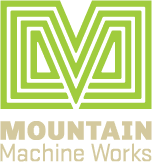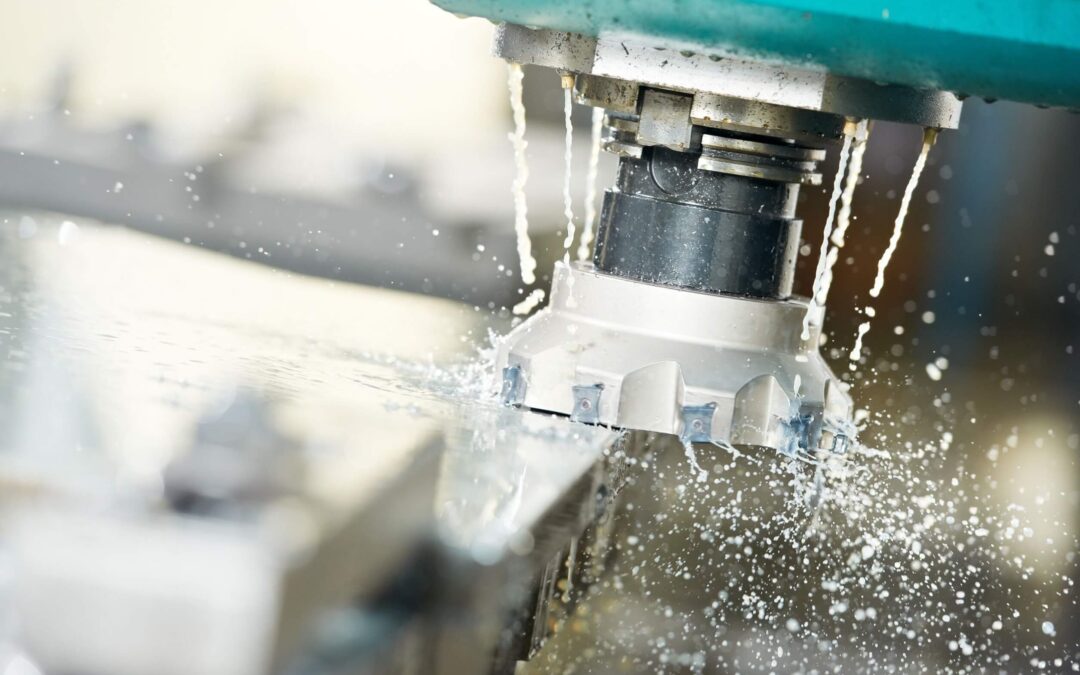Machining is an essential process for manufacturing components and products. It involves cutting and reshaping solid material, such as metal, to create simple or complex geometries. Machined parts can be found in a wide range of products from furniture to consumer electronics. The machining process usually involves the use of special machines including CNC (computer numerical control) mills, lathes, and drills. Each operation within the machining process is highly precise and accurate, making it possible to create even the most intricate geometric patterns or shapes with relative ease. Numerous machining operations can be combined into one set-up using versatile dies that are tailored to specific tasks. Understanding the fundamentals of machining is vital for developing high quality products with cost-effectiveness in mind.
With today’s advanced technology, anything that can be imagined can likely be created through machining. In this definitive guide, we’ll take a closer look at the most common machining processes.
What is the purpose of machining and why is it important?
Machining plays a key role in creating parts with exact specifications. From medical prosthetics to mobile phone components, many products we use on a daily basis are made possible thanks to the precision and accuracy that comes with machining. Not only does machining enable the development of more sophisticated and intricate designs, but it also reduces production costs due to improved efficiency and reduced wastage during the manufacturing process. Without its assistance, many of today’s complex industrial projects would simply not be possible.
What do machine shops do?
Machine shops are invaluable to industry and the modern economy. They specialize in designing, constructing, and maintaining various machinery from metal or plastics as specified by clients. They use advanced technology such as CAD/CAM software for precision engineering and cutting, milling, and CNC lathing to fabricate components quickly and accurately.
In addition to their primary service of manufacturing new parts, many machine shops also offer a wide range of services related to repairing existing machines. This includes troubleshooting mechanical failures, conducting intensive testing processes of refurbished components, and even installing the repaired items back into larger production systems. With their skilled technicians and state-of-the-art technology, machine shops can make an immense difference in ensuring reliability of our industrial infrastructure.
What tools are used for machining?
Various tools are used during the machining process to accomplish the job. Some of the prevalent machining tools include:
- Arbors: These are used to hold cutting tools and rotate them at high speeds for drilling, turning, or grinding.
- Drills: These are handheld or automated machines that use a rotating cutting tool to form holes in materials.
- Lathes: Lathes spin the workpiece around its axis while the cutting tool is held stationary against the workpiece.
- Millers: Millers use a rotating cutting tool against the stationary workpiece to produce various shapes.
- CNC Machines: Computer numerical control machines are automated systems that operate and guide machine tools according to programmed instructions, ensuring precise dimensions are achieved with each cut.
- Saws: Saws use a blade to make straight, curved, or irregular cuts in materials.
- Shapers: Shapers use a reciprocating cutting tool to shape and size parts for precise dimensions.
- Saws: Saws are used to cut intricate shapes and patterns in materials.
The type of equipment used during the machining process will vary depending on the complexity of the application, but all machines will require regular maintenance and calibration in order to
These are just some of the tools used in manufacturing and machining. With each tool playing an important role in achieving a precise final product, it is essential to have a thorough understanding of the different types available for use in order to get the job done efficiently.
What materials can be machined?
A variety of materials can be machined, including:
- Metals: aluminum, steel, brass, bronze, copper, titanium
- Plastics: PVC, acrylic, polyethylene
- Wood
- Ceramics
- Composites: carbon fiber reinforced plastics (CFRP) and glass fiber reinforced plastics (GFRP)
- Foams
- Aluminum alloys
- Steel alloys
The choice of material depends on the desired properties and the specific application for which it is intended. Machining is applicable to all materials, though some require special care due to their unique characteristics.
What are the most common machining processes and how do they work?
The most commonly used machining processes include:
- Milling: This process uses rotating cutting tools to shape and size parts. It is used to produce flat, curved, or irregular surfaces on various materials.
- Turning: This process uses a single-point cutting tool to rotate the workpiece against the cutter for precise shaping and sizing.
- Drilling: Drilling is a machining process that uses a rotating cutting tool to create a hole in the material.
- Reaming: Reaming is a machining process that enlarges previously drilled holes. It is used to achieve precise hole sizes and tolerances.
- Grinding: Grinding uses an abrasive wheel or belt to remove material from the workpiece, giving it a desired shape and size.
- Sawing: Sawing is used to produce straight cuts in materials. It uses either a circular or reciprocating saw blade to make the cut.
- Shaping: Shaping uses a cutting tool against the workpiece for forming various shapes, such as arcs, curves, and slots.
- Boring: Boring is a machining process used to enlarge and refine already existing holes in materials.
- Electric discharge machining (EDM): This is a process that uses electricity to shape and size materials. It works by eroding material away with electrical discharges.
- Laser cutting: This is a machining process that uses a laser beam to create precise cuts in materials.
- Waterjet cutting: This machining process uses pressurized water jets to cut through metal and other materials.
What is the most popular machining process?
The most popular machining process is milling. It is used in a variety of applications, from producing intricate shapes to creating flat surfaces on materials. Milling can produce highly accurate results, making it an ideal choice for machining complex components and parts. It can also be used to produce parts with large surface area, as well as intricate details and shapes.
Examples of products that are created using milling
Many products on the market today are made using milling, including furniture, musical instruments, automotive parts, and children’s toys. In terms of furniture, chairs, tables and shelves are often made through milling. Musical instruments such as flutes, violins, drums and guitars typically involve some combination of machining processes during their fabrication. Automotive parts such as transmission gears and axles are also produced using milling technology, along with components for many other vehicles and machines. Even the most simple of children’s toys can be crafted using milling machines in some capacity – whether for cutting out shapes for blocks or carving a toy truck from solid wood.
Examples of products created with other machining processes
Other machining processes, such as turning and drilling, are used to create a variety of products including bicycle parts, engine components and medical implants. Turning is used to produce small cylindrical shapes found in machine parts like screws and pins. Drilling is often used to create holes in materials for mounting purposes or as part of riveting processes. Laser cutting is also used in many manufacturing processes to create intricate shapes and patterns on parts. Waterjet cutting is often used for larger projects, such as creating steel panels for shipbuilding or large-scale sculptures.
What are the benefits of machining?
Machining offers several advantages over other traditional manufacturing processes that make it one of the most important parts of the manufacturing industry. Benefits include:
- Precise and accurate results: Machining offers high precision fabrication with unmatched repeatability and accuracy to create complex shapes in materials including steel, aluminum, brass and plastics.
- Versatility: Machining’s versatile capability allows production of components in any size and configuration which makes it ideal for creating custom solutions for niche markets. Different machining processes can be used for different applications, allowing manufacturers to produce a wide range of products from simple components to complex parts.
- Speed: Processes such as milling allow for rapid production, reducing the amount of time required to produce a product.
- Cost savings: The use of machining reduces waste and improves efficiency, resulting in cost savings for manufacturers. Machining also does not require expensive tooling like stamping or die-casting and it ensures consistency in each product with minimal wastage as well as lower labor costs due to its automated nature.
Future of machining
The future of machining is one of unprecedented technological advancement. With innovative and evolving automation systems, machining operations can be completed quickly and accurately with a high degree of precision. Furthermore, advancements in computer-aided design offer more possibilities for highly complex components that were previously impossible to manufacture.
The combination of enhanced robotics, programmable logic controllers, and CAD/CAM software is already revolutionizing the way parts are produced in the manufacturing industry and will continue to do so as technology advances. Companies that embrace these cutting-edge innovations have the potential to leap ahead of the competition while also providing their customers with faster turnarounds and higher quality outputs.
Contact Mountain Machine Works to learn more
The machining process is an integral part of manufacturing, and it helps create numerous products. It requires specialized tools, materials, and processes to accomplish. The end result can be anything from a tiny electronic component to large industrial machine parts. At Mountain Machine Works, we use the latest technology and experienced personnel to design, engineer, and fabricate parts for virtually every industry imaginable. We take tremendous pride in our workmanship as well as our customer service: always talking about the different complexities of each project we take head on.
There’s an expert team waiting at Mountain Machine Works ready to turn your ideas into reality with precision and accuracy second to none! So if you’re looking for reliable machining services you can trust in the highest quality workmanship, contact us today – we look forward to helping you make your next project a success!

